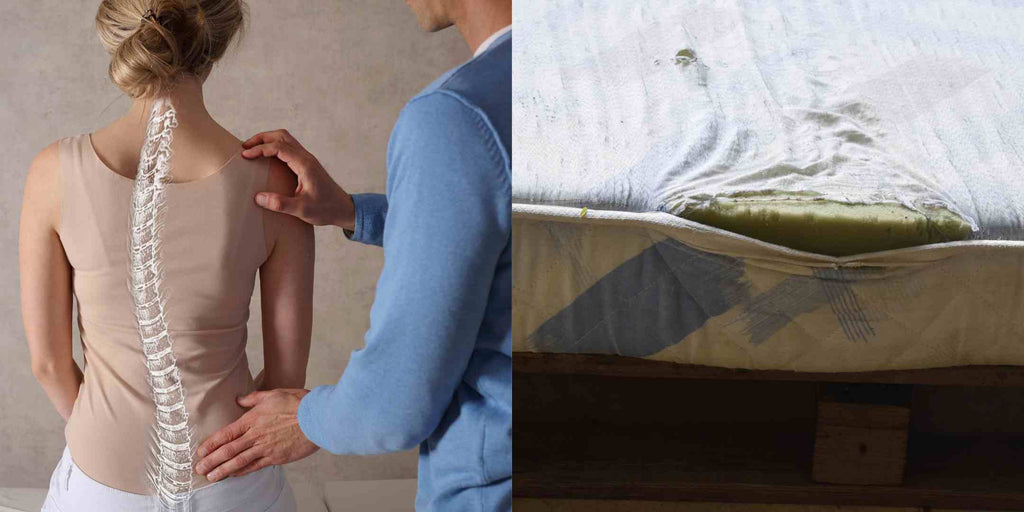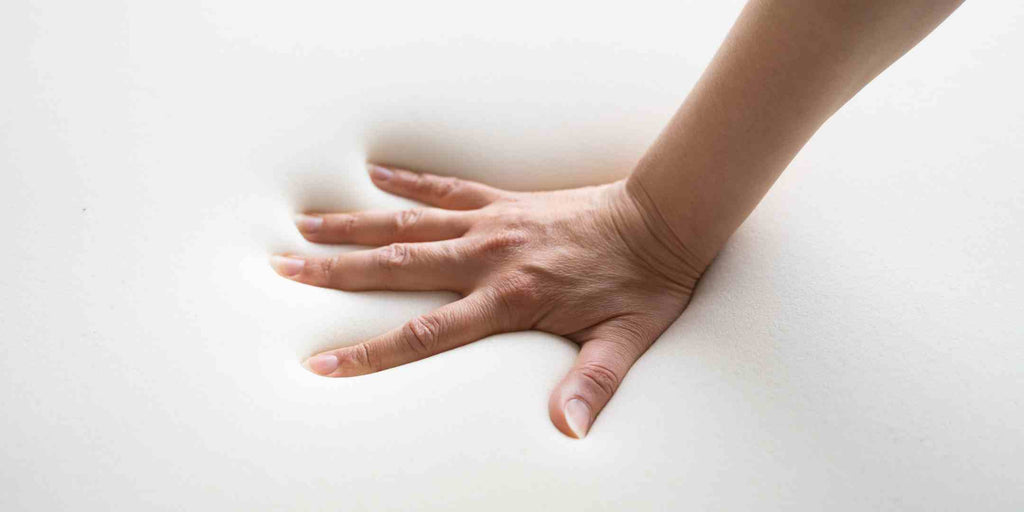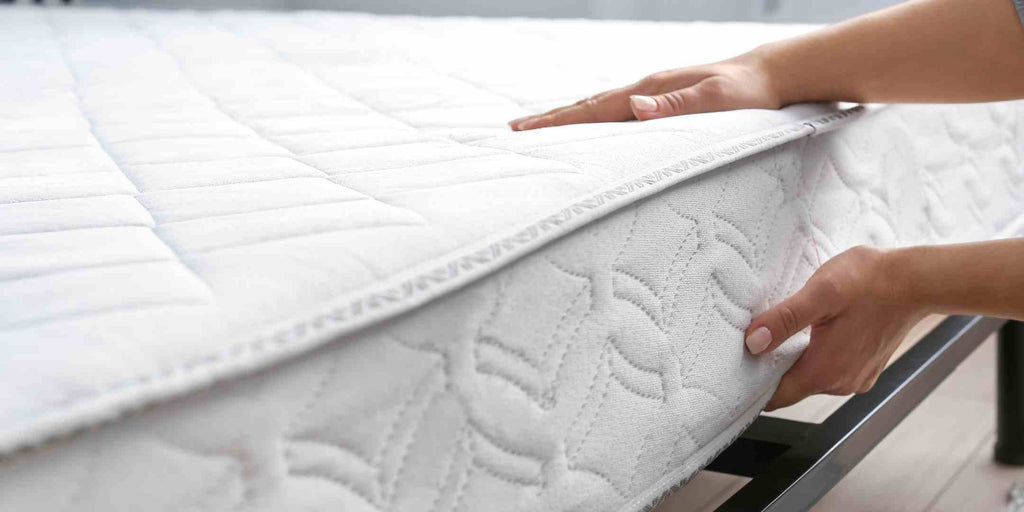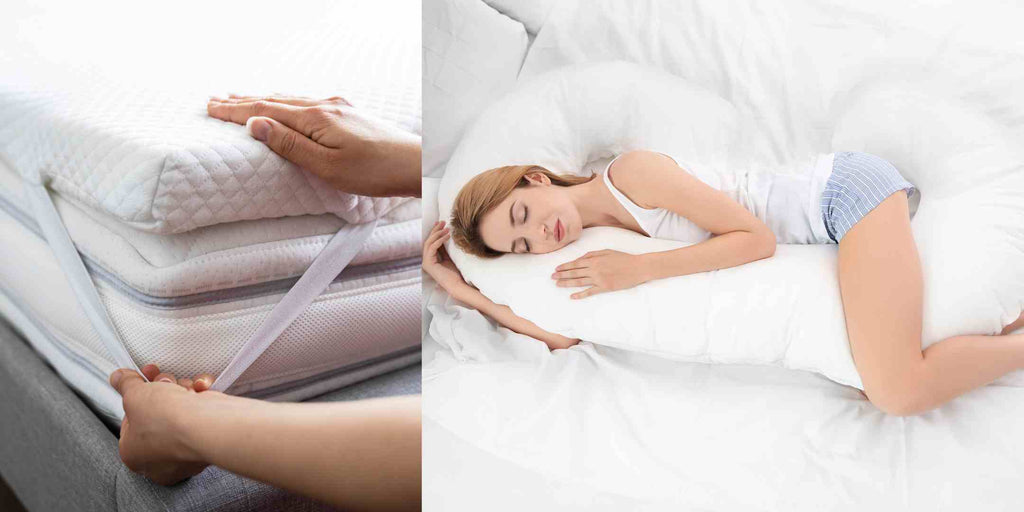Do you wake up every morning with an uncomfortable ache in your upper back, not knowing why? You're not the only one. Upper back pain is becoming more and more common in our busy lives, and it can impact how we feel and function each day. But what if I told you that the answer to your upper back pain might be right in the place where you sleep—the mattress you lie on at night?
Understanding Upper Back Pain

Upper back pain refers to discomfort or stiffness experienced in the region between the base of the neck and the lower ribcage. It is a prevalent issue that can range from mild to severe and is typically characterised by aching soreness or tension in the upper back muscles.
Common Causes of Upper Back Pain

Muscle Strain
Overexertion, poor posture, or heavy lifting can lead to strained muscles in the upper back.
Poor Ergonomics
Prolonged periods of sitting with incorrect posture, especially while using computers or smartphones, can strain the upper back.
Injury
Traumatic incidents, such as car accidents or falls, can result in upper back pain.
Spinal Issues
Conditions like herniated discs, spinal stenosis, or scoliosis can cause upper back pain.
Stress and Tension
Emotional stress can manifest physically, leading to muscle tension and upper back discomfort.
How Poor Mattress Support Can Contribute to Upper Back Pain

Lack of Spinal Alignment
If your mattress is too soft or lacks support, it can lead to poor spinal alignment during sleep, and this misalignment can strain the muscles in your upper back, causing discomfort.
Pressure Points
An unsupportive mattress may create pressure points on your body, especially in the shoulder and upper back area, resulting in muscle tension and pain.
Sagging or Worn Out
Over time, mattresses can sag or lose their supportive qualities. When this happens, they no longer provide the necessary support for your upper back and spine.
Inadequate Pillow Support
An unsupportive mattress and an improper pillow can contribute to poor neck and upper back positioning during sleep.
Why Is It Important to Address Upper Back Pain for Overall Well-Being

Quality of Sleep
Poor sleep due to upper back pain can lead to fatigue, decreased productivity, and mood disturbances.
Long-Term Health
Chronic upper back pain can lead to more serious health issues if left untreated, such as reduced mobility and increased risk of mental health conditions.
Preventive Health
Proper mattress support can prevent upper back pain from occurring in the first place, reducing the need for medical intervention.
Enhanced Daily Life
A pain-free upper back allows you to engage in daily activities, exercise, and enjoy a higher quality of life.
The Appeal of Memory Foam Mattresses

Memory foam mattresses are renowned for their exceptional comfort and support due to their unique material composition. Here's how memory foam provides these benefits:
Contouring
Memory foam reacts to body heat and weight, allowing it to conform closely to your body's shape. This contouring effect provides a personalised and supportive sleeping surface, reducing pressure points and promoting better spinal alignment.
Pressure Relief
By evenly distributing your body weight, memory foam reduces pressure on specific areas like shoulders, hips, and lower back. This can alleviate discomfort and minimise the development of pressure sores.
Motion Isolation
Memory foam minimises motion transfer, which means you're less likely to feel when your partner moves during the night. This can lead to undisturbed, more restful sleep.
Why Memory Foam Mattresses Are a Popular Choice for Many

Comfort
Memory foam's plush, conforming feel provides a luxurious and cosy sleeping experience.
Support
Memory foam's ability to adapt to your body's contours helps maintain natural spinal alignment, crucial for preventing back and neck pain.
Durability
High-quality memory foam mattresses are known for longevity, often outlasting traditional innerspring mattresses.
Allergy-Friendly
Memory foam's dense structure resists common allergens like dust mites, making it a suitable choice for those with allergies.
Versatility
Memory foam mattresses are available in various firmness levels, catering to various sleep preferences.
Potential Drawbacks of Memory Foam Mattress

Heat Retention
Some memory foam mattresses can trap heat, potentially causing discomfort for sleeping hot individuals. However, modern memory foam mattresses often incorporate cooling technologies to address this issue.
Initial Odour
New memory foam mattresses may emit a chemical odour known as off-gassing, and this odour typically dissipates over time but can be bothersome for some.
Break-In Period
Memory foam mattresses may require an adjustment as your body gets used to the unique feel. During this time, you may experience temporary discomfort.
Upper Back Pain
As mentioned earlier, while beneficial for many, memory foam's contouring properties can sometimes contribute to upper back pain if the mattress lacks proper support or if your body requires a different level of firmness.
Surprising Solutions for Upper Back Pain
Proper Mattress Selection

Importance of Firmness: Proper mattress selection is crucial because memory foam mattresses have various firmness levels. Choosing the right firmness ensures your upper back receives the necessary support. A mattress that's too soft can lead to poor spinal alignment and increased upper back pain, while one that's too firm may not provide adequate cushioning.
Thickness Mattress: The thickness of a mattress can affect how well it supports your body, including your upper back. Heavier individuals often benefit from thicker mattresses that can better distribute their weight. Conversely, lighter individuals might find thinner memory foam mattresses sufficient.
Pillow Considerations

Neck Support: Pillows are essential for maintaining proper neck and upper back alignment. If your pillow doesn't support your neck adequately, it can contribute to upper back pain. Memory foam pillows, for example, conform to your head and neck shape, providing customised support.
Pillow Types: Various pillow types cater to different preferences and sleep styles. Memory foam pillows, latex pillows, and contour pillows offer distinct advantages. For upper back pain, choosing a pillow that complements your mattress and supports your head and neck appropriately is important.
Pillow Height: The height of your pillow matters because it can affect the angle at which your upper back rests during sleep. The ideal pillow height depends on your body size and sleep position. For example, side sleepers often need thicker pillows to align their spine.
Sleep Position Adjustment

The Role of Sleep Positions: Your sleep position significantly influences upper back pain. Different positions can either exacerbate or alleviate discomfort. Back sleeping generally promotes better spinal alignment, while stomach sleeping strains the neck and upper back. Side sleeping can be comfortable with proper pillow support.
Ideal Sleep Positions: It's essential to adjust your sleep position to minimise upper back pain. Back sleepers can comfortably place a small pillow or cushion under their knees. Side sleepers can use a body pillow to maintain spinal alignment, and stomach sleepers can try to transition to a different position for relief.
Pillow Support in Different Positions: The right pillow support can make a significant difference depending on your sleep position. Back sleepers might benefit from a thin pillow or a cervical pillow that supports the neck's natural curve. Side sleepers need a firmer pillow to align the head with the spine.
Mattress Toppers and Accessories

Enhancing Support: Mattress toppers are additional layers of cushioning that can be added to your memory foam mattress. Some toppers are designed for extra support or cooling. For those with upper back pain, a supportive topper can enhance their memory foam mattress's comfort and pain relief.
Lumbar Pillows: Lumbar pillows are specifically designed to support the lower back but can also be positioned higher to target the upper back. Placing a lumbar pillow in the right spot can help alleviate upper back pain during sleep.
Pressure Relief: Accessories like pressure-relieving cushions or posture correctors can complement memory foam mattresses. They help distribute pressure more evenly across the upper back and reduce the risk of developing discomfort.
Regular Maintenance

Importance of Maintenance: Maintaining your memory foam mattress is essential for preserving its supportive qualities and prolonging its lifespan. Regular maintenance can prevent sagging or loss of support, which can contribute to upper back pain.
Cleaning Tips: Proper cleaning can remove stains and odours from your mattress, ensuring it remains a comfortable and hygienic sleep surface.
Mattress Rotation: Rotating or flipping your mattress (if designed to be flipped) can help distribute wear and tear more evenly, preventing depressions or sagging that might lead to upper back pain.
Conclusion
The surprising solutions we've explored in this article can be transformative. With their plush comfort and contouring support, memory foam mattresses offer a promising foundation for restful nights. However, achieving optimal results requires a holistic approach that encompasses proper mattress selection, thoughtful pillow considerations, sleep position adjustments, the judicious use of mattress toppers and accessories, and regular mattress maintenance. Remember that while memory foam mattresses provide a promising solution, they are not a one-size-fits-all remedy. Individual preferences, body types, and sleep habits all play pivotal roles in determining the best solutions for your specific needs. It's essential to tailor your approach to what works best for you.
Disclaimer: All the information, including the texts, images, and other materials on this website, is for educational purposes only. While we aim to provide accurate information, nothing on the Megafurniture website should be considered a replacement for medical advice, diagnosis, or treatment. Always consult a qualified medical professional before making any decisions regarding your health.








